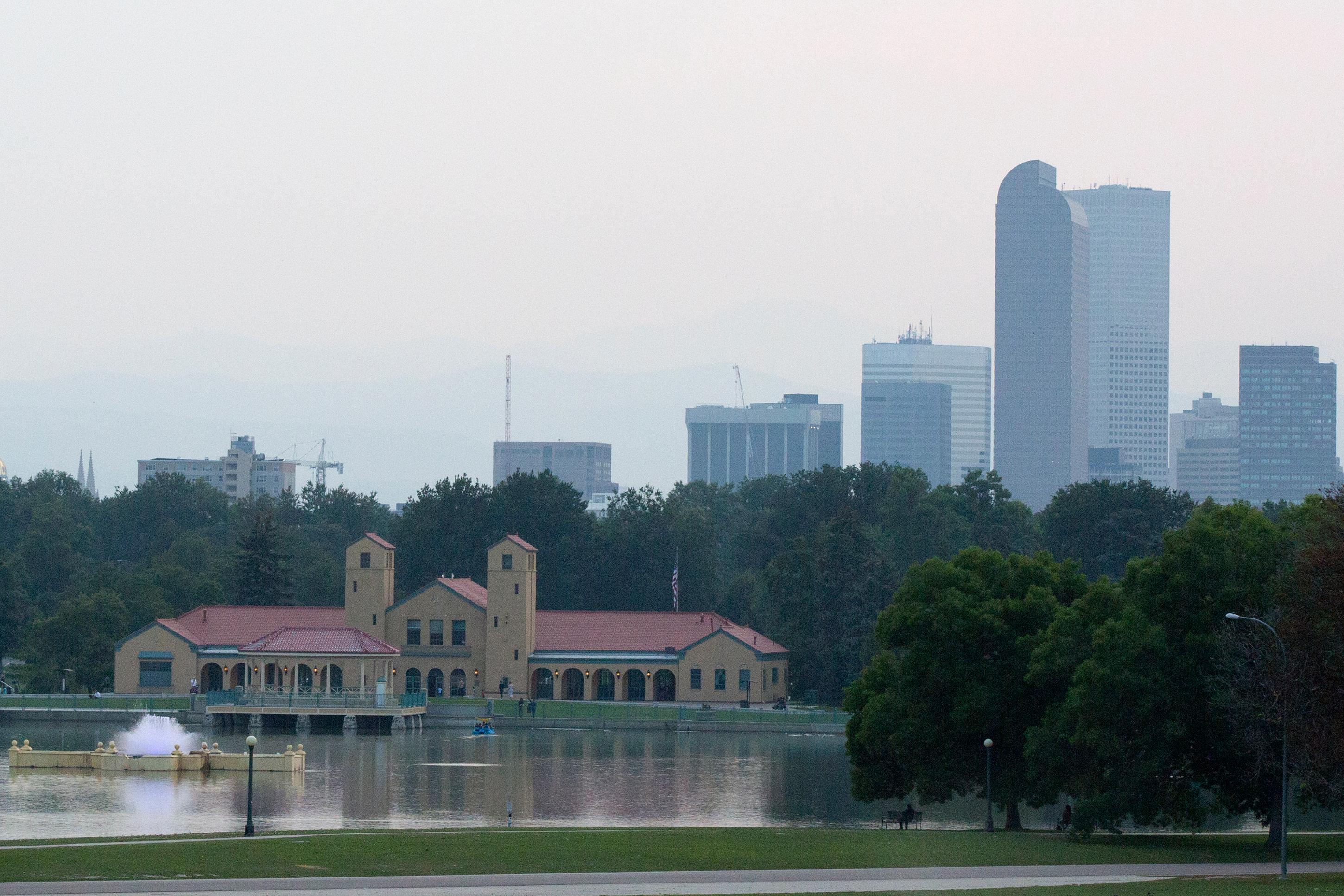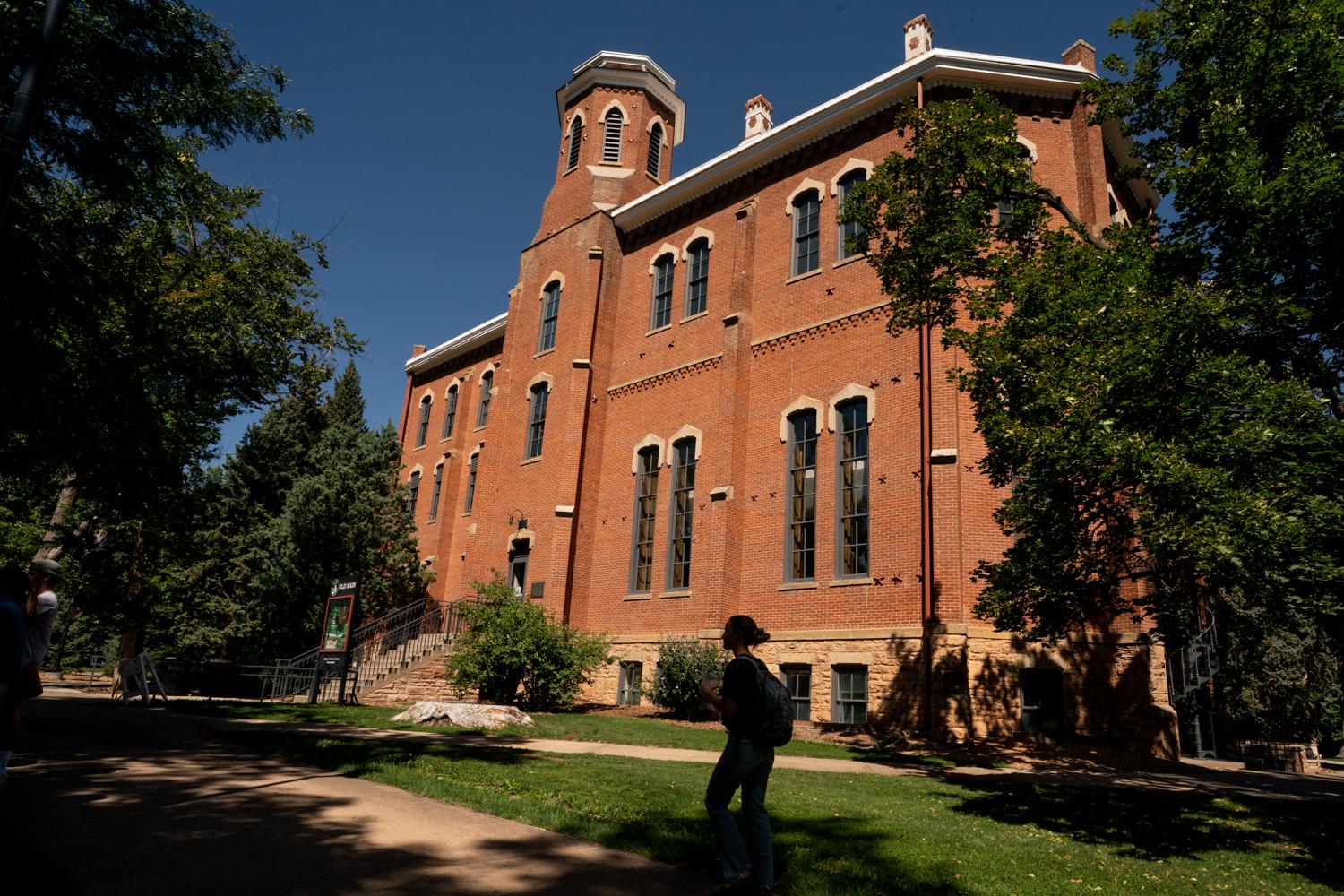
As Western wildfires continue to burn, the health impact of all that smoke is a growing concern — especially with smoke advisories becoming as regular as a weather report.
The number of large fires burning in the U.S. has been hovering at around 100. The most active states include Alaska, Oregon, California and Colorado. Depending on the day and where you live, smoke from these states drifts east, giving states that don’t have any fires a dose of smoke. It also adds to Colorado’s own wildfire haze.
“We have a lot of smoke statewide,” said Scott Landes, the meteorology and prescribed fire supervisor for the Colorado Department of Public Health and Environment. “But the heaviest smoke is in the western parts of the state, west of the continental divide. We’re seeing some very high levels of fine particulates.”
Those microscopic particles can get inhaled deep into the lungs and have significant health impacts, especially for those who suffer from heart and respiratory issues. That heavy smoke with its attendant particulate pollution has been daily presence for Kate Nelson of Grand Junction. It’s been so hazy and overcast, at times she can’t see of the typical landmarks she expects outside her windows.
She’s also the communication manager for Mesa County public health. They’ve been issuing health advisories warning residents to avoid the smoke — especially the old, young and those with respiratory problems.
“I haven't see it to this extent to where we've had to issue an advisory for this many days,” Nelson said.
An array of high tech tools allows officials like Landes to track conditions. There are National Weather Service satellite feeds that allow his team to get a jump on predicting where the smoke might go. The health department has its own network of pollution monitors, but most are on the Front Range. Then, there are the dozens of monitors statewide owned by individual homeowners or businesses, linked to the web through a company called Purple Air, which describes itself as an “air quality monitoring network build on a new generation of ‘Internet of Things’ sensors.”
“We look at as many resources as we can to determine if we need to issue an advisory for that area,” Landes said, while cautioning Purple Air’s system uses different standards than the system the state tracks.
On a warming globe, expect more wildfire-driven bad air advisories in the future. A 2016 study in the journal Climatic Change projects that by the middle of the century, more than 80 million people living in the the West can expect nearly a 60 percent increase in the number of smoke waves — heavy smoke lasting two days or more.
“We're going to have more wildfires which we're expecting and more wildfire smoke which we're expecting we need more tools better tools to be able to detect this wildfire smoke and let the public know when there's health problems,” Landes said.
The American Lung Association warns climate change, things likes drought, wildfire, and higher temperatures, makes air pollution more dangerous. And it increases the risk from pollution in a variety ways, from ozone to allergens. Landes said these wildfires and the vast smoke they produce are simply the new norm.








